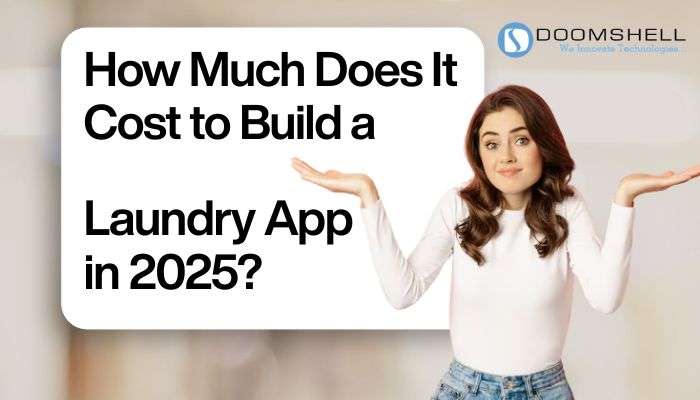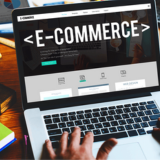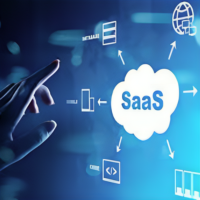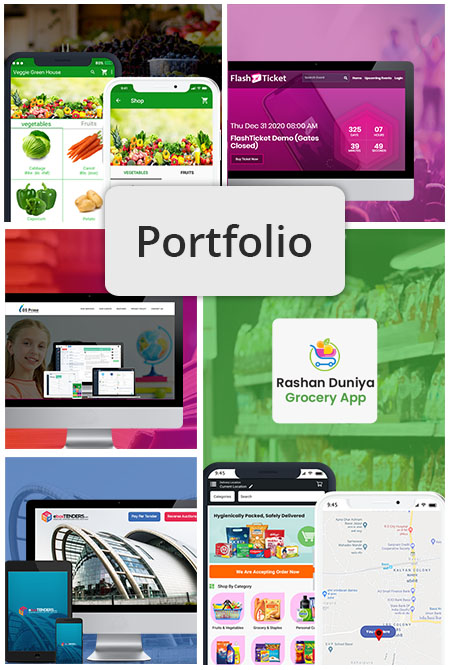Key takeaway:
- The increasing necessity for on-demand laundry applications is driven by busy lifestyles and the accessibility of digital technology in the modern world.
- Laundry App Development costs can range from approximately $8,000 to $30,000 depending on features, which platform to develop for, and which developer location you choose.
- One way to reduce costs is to develop an MVP (Minimum Viable Product), connect to prebuilt APIs – think Google Hangouts, Calendars, etc., build for one platform, or create a team of offshore developers and designers.
- The laundry service industry is experiencing global growth, making it a lucrative digital investment opportunity.
People are now searching for a simple and time-saving answer to many things in their busy life schedules. Whether it is buying groceries in minutes, or getting a ride booked when late for the office, the solution is at their fingertips. In that scenario, making a digital answer for laundry services is becoming the trend.
If you decided to be part of this trend, and to create a laundry app, and earn a profit, the first question that is sure to pop into your head is how much it costs to build a laundry app. This is indeed a big question, and the answer depends on the factors such as the platform you choose, designs, and features you are looking to add. Once you put your investment in the right place, your app will create more productivity with efficiency, and help you grow your business, and gain more customer engagement.
So, finding a professional company who builds a laundry app can lead you through the whole process, and get you the best app that meets your budget. This guide will help you find out the basic elements that account for the developing cost of a laundry app.
Online On-demand Laundry Service Market
- Over the forecast period, the on-demand laundry service sector is expected to grow at a CAGR of 34.80 – 35.80 percent.
- In the United States, revenue generation from 2023 will be higher; total revenue is expected to reach US$31.310.00m by 2023.
- The Home & Laundry Care Market is anticipated to generate US$31.31 in revenue by 2023. The market is expected to achieve a yearly growth of 2.71 percent (CAGR from 2023-2028).
- By 2023, Laundry Care will account for the largest segment volume with US$15.35bn. in the year 2023 is US$92.10.
- In 2023, online sales will contribute to 11.8% of total sales from the Home & Laundry Care Market.
- Overall, from 2023 through 2028, globally generated revenue from home & laundry products was expected to increase by 44.7 billion U.S. Dollars (+22.9%).
What Is a Laundry App?
A laundry app is a mobile application that allows a user to experience laundry services with the touch of some buttons. It will provide services such as:
- Pickup and -scheduled delivery of laundry.
- Dry cleaning, washing, drying, and ironing.
- Timely tracking your services.
- A secure payment option.
On-demand laundry mobile app development is an easy and quick solution to your busy and hectic life. You can receive any service with little effort without walking out of your comfort area.
Types of On-Demand Laundry Applications
There are three business models for you to consider when structuring your on-demand laundry application concept. Let’s review the types recommended by a mobile app development company:
1. Aggregator Laundry Application
The owner of an app that facilitates laundry pick-up does not own a laundry shop but wants to create a platform for launderers to communicate with clients whether their existing services or just creating results. You will only be able to list laundry shops in your application. All payment, pick-up, and delivery will be arranged by the launderer directly with the client.
2. Laundry Marketplace Application
The laundry marketplace provides laundry service when you want laundry done, laundry shops are service providers reporting their status on the app, building out their capacity to facilitate pick-up and drop off. In addition to the service providers, the platform facilitates multiple delivery processes as a marketplace.
3. Dedicated Laundry Application
A dedicated laundry application is a user or consumer focused application concept designed for a single laundry service provider usually with multiple shop fronts. These laundry shops often appeal to the client base and therefore create the quality of service they want to provide and the intended price within a dedicated application. The dedicated application is intended to inform the client base what services are available and pricing.
Laundry App Development Cost?
The cost of building an average laundry app will cost you between $8000-$30,000. Factors determining the cost of a laundry app include: complexity, features, choice of platform (Android, iOS, or PWA), tech stack, and the location of your developers. To get an accurate estimate of the cost, you should talk to an experienced app development company. Here is a table to describe the cost:
| App Type | Description | Estimated Cost Range |
| Basic App | Core features like booking, pickup & payment | $8,000 – $12,000 |
| Standard App | Adds order tracking, notifications, & user profiles | $12,000 – $18,000 |
| Advanced App | Loyalty programs, chat support, & real-time updates | $18,000 – $25,000 |
| Enterprise App | AI/ML integration, multi-location & premium features | $25,000 – $30,000 |
Factors Affecting The Laundry App Development Cost
Creating a laundry application can prove to be lucrative in today’s fast-paced and progressive world. Convenience and on-demand services are at a peak level of importance. The cost to develop a laundry application is dependent on a variety of factors. In this section, you can learn about the possible factors that could impact overall laundry app development costs.
1. App Features and Complexity
The complexity of a laundry app will determine its cost. The development time and cost to develop a mobile app will increase if you add more features, such as order tracking, payment processing and scheduling.
The interface’s complexity, as well as the user experience design, can add to the cost. For example, apps that are basic, and only have limited features, would be of lower cost than more comprehensive solutions.
| Level | Description | Estimated Cost Range |
| Basic | Core features: pickup & delivery, payments | $8,000 – $12,000 |
| Standard | Add order tracking & notifications | $12,000 – $18,000 |
| Advanced | Loyalty programs, chat, real-time updates | $18,000 – $25,000 |
| Enterprise | Full suite with AI/ML, custom integrations | $25,000 – $30,000 |
2. Platform Selection
When developing a laundry app, the cost to build the app is determined in part by which platform to build the app for. Developing a mobile app for a single platform (iOS or Android) will be cheaper than a cross platform app. When developing a cross platform mobile app, while it might be more expensive to develop at the same time, in the future it may save money since there will be no separate platform to develop for.
| Platform Option | Description | Estimated Cost Range |
| Android Only | Single platform app | $8,000 – $12,000 |
| iOS Only | Single platform app | $8,000 – $12,000 |
| Android + iOS | Dual platform app | $15,000 – $22,000 |
| Android + iOS + PWA | Multi-platform with advanced features | $22,000 – $30,000 |
3. Backend Infrastructure
The backend infrastructure and technology stack you choose will affect cost. Considerations of high volume of orders, users, and data, possibly requiring a robust, scalable, and therefore expensive backend system. An iPhone app development company can help integrate third-party services, (e.g., SMS notifications, payment gateways) which will also increase the cost to develop.
| Type | Description | Estimated Cost Range |
| Basic Backend | Simple server setup & APIs | $8,000 – $12,000 |
| Standard Backend | Cloud integration, database management | $12,000 – $18,000 |
| Advanced Backend | Real-time sync, scalable infrastructure | $18,000 – $25,000 |
| Enterprise Backend | High-security, AI-driven backend | $25,000 – $30,000 |
4. User Authentication & Security
Application security is vital, especially for applications that manage user data or payment information. The cost of developing a laundry application may increase as you implement more robust authentication methods, data encryption, or other security enhancements. A higher level of security typically requires more time and resources to ensure a secure user experience.
| Security Level | Description | Estimated Cost Range |
| Basic Login | Email/password setup | $8,000 – $12,000 |
| Standard Login | Social media & OTP login | $12,000 – $16,000 |
| Advanced Security | Payment encryption & two-factor auth | $16,000 – $22,000 |
| Enterprise Security | GDPR/PCI compliance, biometrics | $22,000 – $30,000 |
5. Location and Regulations
The geographic location can have an effect on the price of developing a laundry app. The labor costs and regulatory requirements can be different from one area to another. Depending on the locality, you may require additional resources for compliance with local, national and international data protection policies, laws, regulations and/or directives. This can affect the cost.
| Location/Compliance | Description | Estimated Cost Range |
| India/Asia | Affordable, quality development | $8,000 – $12,000 |
| Eastern Europe | Mid-cost, strong technical expertise | $12,000 – $18,000 |
| USA/UK | High-cost, premium development | $18,000 – $25,000 |
| Global Enterprise | Multi-country compliance & scaling | $25,000 – $30,000 |
6. Testing and Quality Assurance
To make certain your app is bug-free, you need to carry out testing thoroughly and do quality assurance. Also, it will need more testing the higher the tide cleaners cost. Testing on various devices, operating systems, screen sizes and other factors are included. Along with addressing user feedback, improvements will be made.
| QA Level | Description | Estimated Cost Range |
| Basic Testing | Manual testing, bug fixing | $8,000 – $12,000 |
| Standard QA | Cross-platform testing, performance check | $12,000 – $16,000 |
| Advanced QA | Automated testing tools | $16,000 – $22,000 |
| Enterprise QA | Continuous QA, security & compliance tests | $22,000 – $30,000 |

How to Reduce Laundry App Development Cost?
Effective planning and the selection of key features to add to the app will help you lower the cost of developing a laundry application. If you decide to build an MVP to begin, you have to be okay with only being on one platform to launch your app (ios, Android, or website), and use pre-made templates or APIs to save on development time and costs. You should also make sure you are hiring mobile app developers who are good at what they do. So long as you fully understand your project plan, you will be able to lower costs significantly while also maintaining a level of quality. For each of these criteria, we provide the full description:
1. Begin with MVP
MVP refers to Minimum Viable Product and covers the required features for a functioning laundry app. You will need to develop an app with the essential features like account creation, select your service, schedule a drop-off, secure online payment etc. – NOT a full-featured app.
| Approach | Description | Estimated Cost Range | Savings Compared to Full Build |
| Full-feature App | Build all features at once | $25,000 – $30,000 | $0 |
| MVP with Core Features | Start with essential features only | $10,000 – $15,000 | $5,000 – $15,000 |
| Gradual Feature Add-on | Add features later based on user feedback | $15,000 – $20,000 | $3,000 – $10,000 |
2. Select One Platform
In general, creating an application across all platforms (Android, iOS, and web) can be a more expensive endeavor. It is more optimal to focus on one platform, based on your intended user base. You can always seek enterprise-level laundry app development later. This not only reduces cost but also allows you to improve the app at the same time.
| Approach | Description | Estimated Cost Range | Savings Compared to Dual Platform |
| Android + iOS | Develop for both platforms simultaneously | $25,000 – $30,000 | $0 |
| Android Only | Develop only for Android | $12,000 – $18,000 | $7,000 – $12,000 |
| iOS Only | Develop only for iOS | $14,000 – $20,000 | $5,000 – $10,000 |
3. Use Pre-built Solutions
Beginning all creation from the beginning can grow costly; however, you could go with pre-built APIs, templates, or framework. These options offer excellent functionality at a reduced cost and time. For example, if you use a pre-built payment gateway or booking system, you will lower the cost involved with development.
| Approach | Description | Estimated Cost Range | Savings Compared to Custom Build |
| Custom Development | Build everything from scratch | $25,000 – $30,000 | $0 |
| Pre-built Templates | Use ready-made templates & frameworks | $12,000 – $18,000 | $7,000 – $12,000 |
| API Integrations | Integrate third-party APIs for core functions | $15,000 – $20,000 | $5,000 – $10,000 |
4. Hire Global Developers
Employing highly qualified global developers from countries such as India, Ukraine, and the Philippines will lead to lower costs. Hiring cost-effective developers does not mean sacrificing quality. Some agencies even have a dedicated developer hiring option with higher efficiency.
| Approach | Description | Estimated Cost Range | Savings Compared to Local High-Cost Team |
| Local High-cost Team | Developers from high-cost regions | $25,000 – $30,000 | $0 |
| Offshore Team | Developers from affordable countries | $12,000 – $18,000 | $7,000 – $12,000 |
| Hybrid Team | Mix of local and offshore developers | $15,000 – $22,000 | $3,000 – $8,000 |
5. Do Proper Planning
When you are clear about what you want within your app, that you want to be delivered to the clients, you will want to ensure you are planning the app properly. Good planning will help avoid problems with scope-creep and excessive rework, which may result in increased costs. With good planning, you can focus on developing an app smoothly and at a reasonable cost.
| Approach | Description | Estimated Cost Range | Savings Compared to No Planning |
| No Clear Plan | Frequent changes & rework | $25,000 – $30,000 | $0 |
| Detailed Planning | Defined features, timeline & budget | $12,000 – $18,000 | $7,000 – $12,000 |
| Moderate Planning | Basic project planning before development | $15,000 – $22,000 | $3,000 – $8,000 |

H2 Top 5 On-demand Laundry Apps
| On-Demand Laundry App | Available Platform | Downloads | Ratings |
| TaskRabbit | Android/iOS | 1M+ | 4.0 |
| LaundryHeap | Android/iOS | 1L+ | 4.5 |
| Delivery.com | Android/iOS | 100K+ | 3.8 |
| ByNext | Android/iOS | 10K+ | 3.2 |
| Cleanly | Android/iOS | 1K+ | 3.5 |
1. TaskRabbit: TaskRabbit has a broader service designed to connect individuals with services they need with those who are looking to work. Services can range from cleaning, moving, to event planning. TaskRabbit says that each “Tasker” has gone through both in-person interviews and background checks.
2. Laundryheap: Laundryheap is an app-based laundry and dry cleaning service service that allows users to schedule pick-ups and deliveries for laundry items to be cleaned, folded, and returned within 24 hours. Within a 24 hour period or less, users can have their laundry done. The laundry mobile app, with a laundry app like Laundryheap, helps users to have access to a convenient way to have laundry items cleaned efficiently in a variety of cities making it appealing to individual and household as it removes the inconvenience of washing their own clothing while providing solutions at the same time.
3. Delivery.com: Through Delivery.com, you have the ability to select who your clothes will be cleaned by. The company will not charge you a fee for the service; instead you are paying the dry cleaner to clean and deliver your clothes. Delivery.com is one of the leading laundry services app whenever you want to take the risk of your favorite shirt shrinking. User reviews and ratings on Yelp will provide you an idea of how customer service issues are dealt with.
4. ByNext: This new application, which is a collaboration of Cleanly and NextCleaners, has services for residential cleaning and clothing care. The laundry section of the application has dry cleaning and traditional laundry. This is the best app to make money with laundry and allows you to build an experience with options such as next day service, preferences for washing, drying and detergent, etc.
5. Cleanly: Cleanly was an app that provided laundry and dry cleaning services in selected cities. Users could select pickup and delivery times for laundry and dry cleaning, track their order, and customize their preferences.
The laundry share app sought to solve the laundry problem as a convenient solution for busy people who wanted to have professionally cleaned laundry conveniently delivered to their homes. So, if you are considering investing in the best laundry app, then you should build a laundry app like Cleanly.
Steps to Build a Laundry App
In today’s fast-paced lifestyle, developing an on-demand laundry app can be profitable. Utilizing a dry cleaning app development company, businesses can easily develop their own laundry app. So, let’s review the step-by-step process:
Step 1: Do Market Research
You need to research your target market very well first. Knowing who lives in the area and who your competition is is important to understanding whether or not there is demand for a service such as laundry. What makes your app unique, what value will it add to users, is everything clear and tight enough to move on to the next step.
Step 2: Define App Features
The next step is to determine which features you want your app to provide. The basic features consist of user registration, order placement, real-time tracking and payment processing. You may add features such as pickup scheduling and subscriptions.
Step 3: Choose a Technology Stack
Select the technology stack you would like to use for your app with the assistance of a laundry mobile app developers services provider. For the application, you’ll need a front-end for the user interface and a back-end for the server management. For the backend, you can use languages like Python or Node.js , and for the front end use frameworks like React Native to give users a seamless experience across different platforms.
Step 4: Design & Development
The next thing to do is to build approachable developers to generate a friendly, appealing user experience. Before you initiate the development phase, it is vital to work on wireframing and prototyping. Create wireframes for both admin and user panels for the application. The app should be intuitive and pleasant to the eye!
Step 5: App Testing
You should conduct extensive tests on your app to ensure it is free of bugs and operates smoothly. Usability testing is particularly useful to discover flaws in the user experience. Look for security vulnerabilities, and ensure the app can handle medium to heavy load without crashing. Resolve any issues before launch
Step 6: Launching and Marketing
Once you have thoroughly tested and quality checked your laundry app, you can proceed with launching your app on renowned app stores like the Apple App Store or the Google Play Store. To secure your first users, use a marketing plan with some incentives and promotional deals to get your community involved. Ideally, you want a viral effect to gain additional users. Request your users to rate and review your business.
Key Features to Integrate in On-demand Laundry App
To thrive in the cutthroat market, you’re required to launch an application with multiple features. Prior to rolling out the app, it is a good idea to consider the feature of the laundry apps. Integrating feature may expeditiously increase the cost of laundry app development;
1. Feedback and Rating: After using the service of a specific launderer, customers should be able to give feedback about their experience. This is essential for users of the application to find launderers, and launderers to be able to improve their line of work.
2. CRM and CMS Integration: The customer relationship management system and the Content Management system, both systems will be critical for the growth and scale of the application in the long-run. Customers can reach customer support or customer service in the CRM for any question or complaint. The admin / launderer will manage the content regarding pricing, availability and services offered, as well as any promotional events.
3. Marketing and Promotional Tool: Marketing and promotional tools are critical for promoting or marketing your business. Marketing tools can be mail marketing, push notifications, calling, messages, offers and discounts, and much more.
4. Setting Up Reminders: Customers usually book their appointments based on their preferences. Therefore, a feature in the app that allows them to set up automatic reminders would be very useful. This reminder will help them remember to schedule their time slots, ensuring the clothes are delivered as planned.
5. List Every Service Available: It is important to clearly outline each service to make it easier for the customer. If someone wants to choose washing services, there are several options, such as washing, ironing, and folding. List each service.
6. In-App Chat and Call: Some clothing requires special instructions to be cleaned safely. The easiest way for customers to communicate with the laundry service is through messaging or in-app chat. This will help customers feel more confident about the different stores and laundry agencies.
7. Push Notification: This feature will increase the visibility of your laundry pickup and delivery app to customers; it’s also a good method to keep users updated. You can ping users on their devices without bothering them to send a message whenever needed.
8. Payment Method: Integrating a Payment Method in your application is the best way to push your customers to use the platform. However, If you want to build a development on-demand mobile dry cleaning application, your application needs to provide users a proper support of payment methods. Cash on delivery and banking or cashless payments will be all the possible selections for customers to choose from.
Key Features That Affect Cost
The more features you include, the higher the development cost. Common features are:
- User Registration: This feature allows users to sign up and create secure accounts using email, phone, or social media. It helps them save details and manage their preferences easily.
- Service Selection: Users can browse and choose from services like washing, dry cleaning, and ironing. Clear categories with pricing make selection simple and convenient.
- Order Scheduling: Customers can schedule pick-up and delivery times as per their convenience. This flexibility improves user satisfaction and service efficiency.
- Payment Integration: Secure payment options like cards, UPI, wallets, and net banking are provided. Multiple choices make transactions smooth and trustworthy.
- Order Tracking: Real-time tracking updates keep users informed about their laundry status. It ensures transparency and builds customer confidence.
- Ratings and Reviews: Users can rate services and leave feedback. This helps businesses improve and increases trust for new customers.
Factors Influencing Development Cost
Several elements impact the overall cost:
- App Complexity: More features and intricate designs increase costs.
- Platform Choice: Developing for multiple platforms (iOS, Android, web) adds to expenses.
- Backend Infrastructure: Robust backend systems require more resources.
- Security Measures: Implementing strong security protocols can be costly.
- Developer Location: Development costs vary by region.
Market Outlook
The on-demand laundry service market is growing rapidly. In 2023, the market was valued at $31.31 billion and is projected to grow annually by 2.71% through 2028. This growth indicates a promising opportunity for laundry app development.
Conclusion on Laundry App Development
Developing a laundry on-demand app can be a profitable business. It offers convenience to users and a good chance for earnings. The cost of developing a laundry app can differ greatly depending on features, complexity, and the platform you choose. It’s usually a good idea to hire a company that specializes in app development.
This choice helps ensure a quality product and reduces development risks. In the end, it leads to a successful and competitive laundry app in the market. If you are creating custom laundry app, Consult with the best mobile app development company in USA.
Frequently Asked Questions About Laundry App Development?
Q1. Which Elements Influence the Cost of Laundry App Development?
The cost of Laundry app development is determined by the complexity of the app, features, backend infrastructure, testing, authenticity and security, selection of platform, and assurance of quality.
Q2. How to Decrease the Cost of Developing a Laundry App?
To decrease the costs related to laundry app development, you should focus on important features, choose cross-platform frameworks, use pre-built components wherever possible, and reduce post-validation maintenance.
Q3. What are the Costs to Hire an App Developer?
The cost of hiring an app developer depends on several elements like level of expertise, and location etc. In general, the hiring cost of a developer is typically in the ballpark of $15-$25 per hour, and plus.
Q4. What are Benefits of Creating a Laundry App?
The benefits of creating a laundry app are:
- Convenience
- Time-savings and scheduling flexibility
- Order tracking & seamless payments
Increased user experience for laundry management and services
Q5. How to Build a Laundry App?
To build a laundry app for your business, you do market analysis, you establish the key features of the app, you draft a UI/UX design, you build the Laundry app, and then you test launch the app. You will also need to work on maintenance and future updates.













































